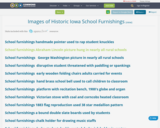
Historic images of Iowa school furnishings- desks, books, heaters, flag and more
- Subject:
- History
- Material Type:
- Diagram/Illustration
- Date Added:
- 05/03/2017

Historic images of Iowa school furnishings- desks, books, heaters, flag and more

This course is intended to assist undergraduates with learning the basics of programming in general and programming MATLAB® in particular.
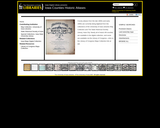
Here you can find nearly all of Iowa’s 99 counties atlases in digital collection. In addition, county atlases from the late 1800s and the early 1900s are being digitized.
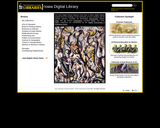
The Iowa Digital Library features more than a million digital objects created from the holdings of the University of Iowa Libraries and its campus partners. Included are illuminated manuscripts, historic maps, fine art, historic newspapers, scholarly works, and more. Digital collections are coordinated by the Digital Scholarship & Publishing Studio.
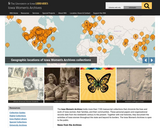
The Iowa Women’s Archives holds more than 1100 manuscript collections that chronicle the lives and work of Iowa women, their families, and their communities. These personal papers and organizational records date from the nineteenth century to the present. Together with oral histories, they document the activities of Iowa women throughout the state and beyond its borders. The Iowa Women’s Archives is open to the public.

Agriculture: the science, art, and occupation of raising crops and livestock for food, fiber, and fuel.
Learning Fields was created to help 3rd to 5th graders and their educators learn how agriculture has changed through the years in Iowa. This website includes how livestock, crops, people and power have affected our lives.
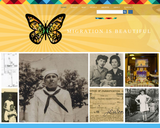
This website details the migration patters in and out of Iowa over the last two centuries. Includes the history of Latinos in Iowa.
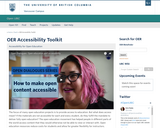
The focus of many open education projects is to provide access to education. But what does access mean? If the materials are not accessible for each and every student, do they fulfill the mandate to deliver fully open education? The open education movement has helped people in different parts of the world access content that they would otherwise not be able to view or interact with. Open education resources reduce costs for students and allow for greater flexibility for instructors. Accessibility can help push the movement even further forward.
The goal of the OER Accessibility Toolkit is to provide the needed resources needed to each content creator, instructor, instructional designer, educational technologist, librarian, administrator, and teaching assistant to create a truly open and accessible educational resource — one that is accessible for all students.

“Reading Poetry” has several aims: primarily, to increase the ways you can become more engaged and curious readers of poetry; to increase your confidence as writers thinking about literary texts; and to provide you with the language for literary description. The course is not designed as a historical survey course but rather as an introductory approach to poetry from various directions – as public or private utterances; as arranged imaginative shapes; and as psychological worlds, for example. One perspective offered is that poetry offers intellectual, moral and linguistic pleasures as well as difficulties to our private lives as readers and to our public lives as writers. Expect to hear and read poems aloud and to memorize lines; the class format will be group discussion, occasional lecture.

Most algorithms in computer vision and image analysis can be understood in terms of two important components: a representation and a modeling/estimation algorithm. The representation defines what information is important about the objects and is used to describe them. The modeling techniques extract the information from images to instantiate the representation for the particular objects present in the scene. In this seminar, we will discuss popular representations (such as contours, level sets, deformation fields) and useful methods that allow us to extract and manipulate image information, including manifold fitting, markov random fields, expectation maximization, clustering and others.
For each concept – a new representation or an estimation algorithm – a lecture on the mathematical foundations of the concept will be followed by a discussion of two or three relevant research papers in computer vision, medical and biological imaging, that use the concept in different ways. We will aim to understand the fundamental techniques and to recognize situations in which these techniques promise to improve the quality of the analysis.
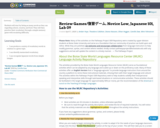
Students will start by listing as many words as they can regarding school, country, and food. They will then practice their vocabulary through a simple memory game with escalating difficulty.

Experience agriculture hands-on by visiting one of Silos & Smokestacks’ 117 partner sites. Learn about the history and rich culture of farming in America, get up close and personal with livestock and animals, or discover new and amazing innovations in the agriculture industry!
Silos and Smokestacks is one of the 49 federally designated heritage areas in the nation and are affiliated with the National Park Service. Their mission is to tell the story of American agriculture and its significance to the world through activities and partnerships.

This updated resource suggests some of the best places on the web for astronomy instructors to obtain high-quality images for showing in class (and gives the direct URL for obtaining the photos). It includes general sources, such as the Hubble image gallery and NASA’s Planetary Photojournal, as well as more specific sources for a particular observatory or wavelength range.
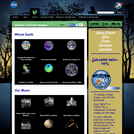
This gallery features NASA images of stars and galaxies.

This class focuses on representation tools used by architects during the design process and attempts to discuss the relationship they develop with the object of design. Representation plays a key role in architectural design, not only as a medium of conveying and narrating a determined meaning or a preconceived idea, but also as a code of creating new meaning, while the medium seeks to establish a relationship with itself. In this sense, mediums of representation, as external parameters to the design process, are not neutral tools of translating an idea into its concrete form. They are neither authentic means of creativity, nor vapid carriers of an idea. Therefore, an important aspect in issues of meaning is how the architect manipulates the play of translating a concept to its concrete version, through the use of a medium of representation. The course is a continuation of the equivalent course taught in the fall semester and specifically focuses on digital media. The course is intended to establish a reciprocal relationship with the design studio, feeding from and contributing to its content.
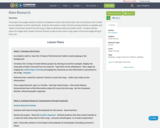
This project encourages students to delve into database research (this lesson plan uses CultureGrams and TrueFlix, but any database could be substituted). Students will research a state, find facts and pay attention to syllables and rhythm so that their words fit into the song 12 Days of Christmas written by Frederic Austin. Students will also search for images with Creative Common licenses as well as learn how to copy, paste, and format images (bring to front, etc).

Do poems think? Recurrent images of the poet as an inspired lunatic, and of poetry as a fundamentally irrational art, have often fostered an understanding of poets and their work as generally extraneous to the work of the sciences. Yet poets have long reflected upon and have sought to embody in their work the most elementary processes of mind, and have frequently drawn for these representations on the very sciences to which they are thought to stand - and sometimes do genuinely stand - in opposition. Far from representing a mere departure from reason, then, the poem offers an image of the mind at work, an account of how minds work, a tool for eliciting thought in the reader or auditor. Bringing together readings in British poetry of the eighteenth and nineteenth centuries with writings from the emergent sciences of psychology and the physiology of the brain, this interdisciplinary course will explore the ways in which British poets, in years that witnessed the crucial development of these sciences, sought to capture an image of the mind at work. The primary aim of the course is to examine how several prominent genres of British poetry - the lyric, for instance, and the didactic poem - draw from and engage in this period with accounts of cognition within the sciences of psychology, physiology, and medicine. More broadly, the course aims to give undergraduates with some prior experience in the methods and topics of literary study an introduction to interdisciplinary humanistic research.

Photos and objects provide amazing opportunities for close looking and student questions. Look closely at a photo of three Mars rovers to learn more about exploring space.

Teaching and Learning Iowa History represents a unique way for community members, teachers, and university students to join in the same learning experience with similar goals and curiosities. Whoever you are, we're glad you're here!

Directed practice in acting, production, or design on a sustained theater piece, either one-act or full length, from pre-rehearsal preparation to workshop production. Consult Theater Arts Office. Includes directed practice in stagecraft. Dramashop rehearses a production of Eric Bogosian’s play “subUrbia” for presentation the first two weekends in February. Visiting artist, David R. Gammons, directs. Approximately 10 roles filled by auditions. Students can receive up to six credits for acting or technical positions. Schedule of rehearsals to be arranged, but actors should be available during the afternoon. Students must be available for performances in early February. This course is offered during the Independent Activities Period (IAP), which is a special 4-week term at MIT that runs from the first week of January until the end of the month.